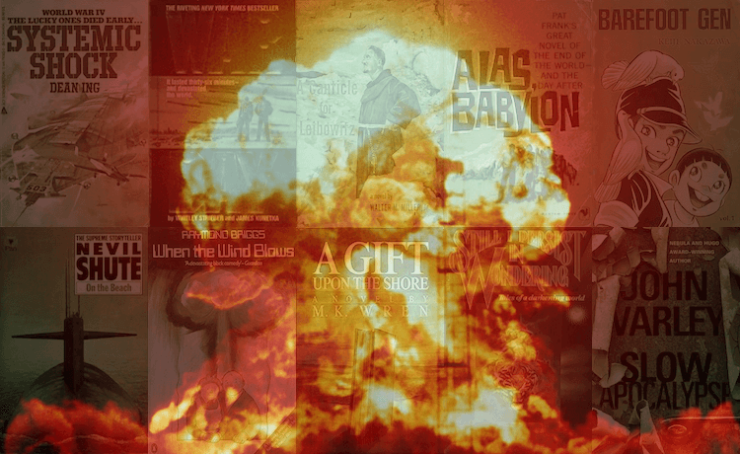Most people now living are too young to remember the Cuban Missile Crisis. It was a fun time when the Americans and the Russians (who at that time were not good buddies but rivals), toyed with seeing just how close they could come to World War Three without pressing the (metaphorical) button. For various reasons, not least of which was that the balance of power of power greatly favoured the United States and the Soviets apparently didn’t fancy atomic suicide for some reason, the stand-off stopped short of nuclear war.
For me, living as I did in Herne Hill, well within the buildings fall, people burn like shrieking candles zone of London, England, that was probably for the best. But that experience (wondering if I would die soon) was life-changing. I was forced to imagine the horrors of a nuclear apocalypse . Even though governments (which have invested trillions in possible apocalypse) would rather we just go about our business, blissfully unaware.
Writers are in the business of imagination. It should be no surprise that they have ventured into the apocalypse zone, in print and other media. Hundreds of novels have explored the exciting worlds possible before, during, and after the nuclear apocalypse.
In honour of the October Missile Crisis, here are thirteen works (one for each day of the Crisis) about worlds in which nuclear war was a reality.
Hadashi no Gen by Keiji Nakazawa (1973)

Of course, we live in a world where nuclear war was a reality, where nuclear weapons have been used in combat, at Hiroshima and Nagasaki. Keiji Nakazawa was a boy in Hiroshima on August 6, 1945. Most of his family died, trapped under their burning home; Nakazawa, his mother, and a sister survived (although his infant sister died soon after). His ten-volume manga Hadashi no Gen (Barefoot Gen) is a fictionalized account of Nakazawa’s experiences in the days after Hiroshima’s destruction.
To Western eyes, the manga is an odd marriage of an art style more often seen in light-hearted comics and a seemingly endless cavalcade of horrors. All horrors inspired by real life.
On the Beach by Nevil Shute (1957)
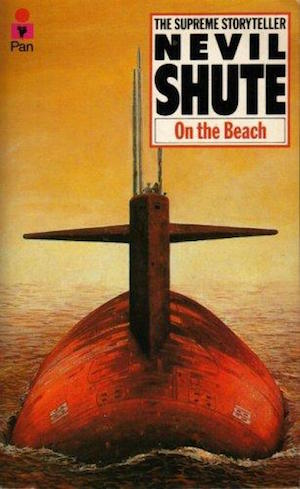
On the Beach is set in the aftermath of a spasm war that followed uncontrolled nuclear proliferation. It didn’t help that in Shute’s world, nuclear weapons were extremely cheap, well within reach of any tinpot nation. The immediate consequence was the death of every living thing in the northern hemisphere. The long-term consequence? Lethal fallout spreading inexorably south. Death is inevitable, leaving only the question of how each character will grapple with impending mortality.
Much of the worldbuilding in Shute’s novel doesn’t stand up to close scrutiny. Nuclear warheads aren’t as cheap as Yugos or as common as Fiats (which is all to the good). The author seems to be promoting a political moral—only large, powerful nations are responsible enough to be trusted with nukes—which is far from proven. Perhaps not even plausible. Still, it’s a well-written, engaging novel about human extinction.
I am not saying that just because it was assigned reading in grade school, perhaps as part of an ongoing effort to make sure that every school kid was profoundly depressed.
Alas, Babylon by Pat Frank (1959)

In Alas, Babylon, nuclear war leaves vast swaths of the combatant nations transformed into radioactive wastelands. Fort Repose is spared because it is too small to rate a nuke and lucky enough to avoid fallout-laden winds. The town must deal with the aftermath of war: the complete collapse of modern civilization, disease, hunger, and wandering bandits.
Alas, Babylon is a product of a very different time and place. It’s clearly trying to be progressive by the standards of the time, but it does not read well now. Gender- and racially-stereotyped characters are the least of the book’s problems.
Pat Frank explained why he wrote it:
I have an acquaintance, a retired manufacturer, a practical man, who has recently become worried about international tensions, intercontinental missiles, H-bombs, and such.
One day, knowing that I had done some writing on military subjects, he asked: “What do you think would happen if the Russkies hit us when we weren’t looking—you know, like Pearl Harbor?”
[…]
It was a big question. I gave him a horseback opinion, which proved conservative compared with some of the official forecasts published later. I said, “Oh, I think they’d kill fifty or sixty million Americans—but I think we’d win the war.”
He thought this over and said, “Wow! Fifty or sixty million dead! What a depression that would make!”
I doubt if he realized the exact nature and extent of the depression—which is why I am writing this book.
A Canticle for Leibowitz by Walter M. Miller (1959)

A Canticle for Leibowitz recounts the history of an abbey in a North America scoured by the Flame Deluge. It consists of three stories set (respectively) six, twelve, and eighteen centuries after the Flame Deluge. It’s a fix-up; the three stories were first published in the Magazine of Fantasy and Science Fiction. It recounts the efforts of the monks of the Abbey of Saint Leibowitz to preserve scraps of knowledge from the pre-Flame world, and then surveys the consequences of their efforts. Will this new world fall into the same nuclear trap as the old one? Our world didn’t fully grasp the consequences of nuclear war. The world of 3781 can…but will that matter?
Canticle is a striking enough work that it has given readers the impression that it was a one-shot wonder. Miller wrote other stories during the 1950s, but they have been largely forgotten, overshadowed by this grim work.
The War Game by Peter Watkins (1965)
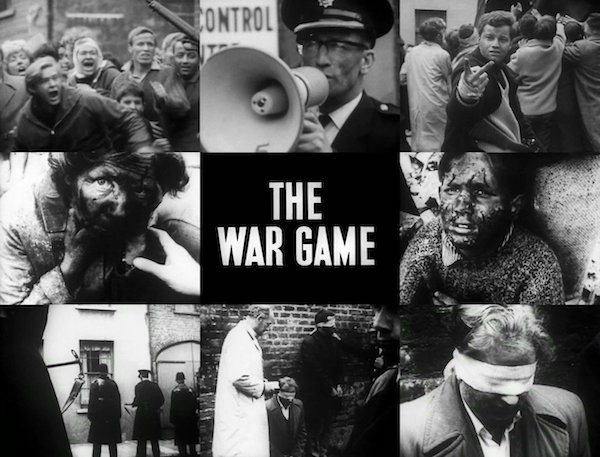
The War Game is a TV drama filmed as a documentary that presents the probable effects of a nuclear war on the United Kingdom. There is no story in the conventional sense. The book is a series of vignettes in which ill-prepared people have a very bad time indeed. Moral: a small nation like the UK is extremely vulnerable to large-scale weapons of the thermonuclear kind.
The documentary was filmed on a tiny budget (doubtless funded by coins found under the office couch cushions). The War Game was nevertheless effective enough in conveying the horror of nuclear war that the BBC declined to air it as planned. Spectacle is not required for effectiveness.
This was not the first instance in which authority figures have recoiled in horror when presented with the artifact or outcome they have clearly requested.
Still I Persist in Wondering by Edgar Pangborn (1978)
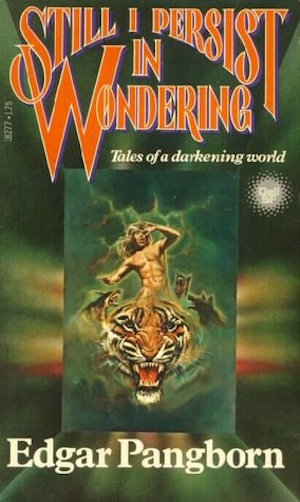
Published posthumously, Still I Persist in Wondering collects most of Pangborn’s Darkening World short pieces. The world after the Twenty Minute War and the ensuing pandemic and radical sea level rise is a grim one, abounding in danger, human stupidity, and unpleasant death.
The Tales of the Darkening World were written in two bursts: the novels Davy in 1964 and The Judgment of Eve in 1966, and then a pause before the flurry of short pieces in this collection. The second burst finished with the novel-length The Company of Glory (1975). Between the two phases, various events pushed Pangborn towards a much bleaker view of humanity and his fiction in this collection reflects this. Treasure what’s pleasing while you have it, he might say, because folly will transform it all into ashes and rot.
Systemic Shock by Dean Ing (1981)
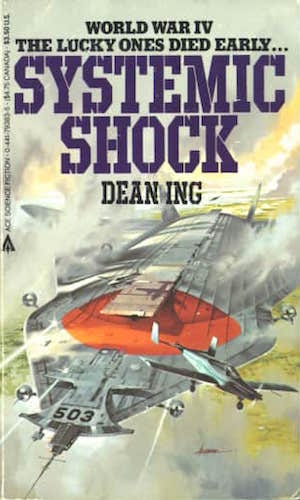
Systemic Shock details a World War Four between the United States, Russia, and other nations on one side, and the Islamic nations (which in this setting includes India; have fun discussing that in comments) and China on the other. Orphaned during the first exchange, teenaged Ted Quantrill discovers that he has a remarkable talent for killing—a talent that will make him quite valuable as the war drags on.
Systemic Shock divides its story between a very high-level account of the war and a low-level focus on Quantrill. Ing has a rather sunny view of the capacity of nations to continue functioning even after half the population has died in nuclear fire and plague. Canada is all too vulnerable to atomic inconvenience, despite which Ing’s Canada punches well above its weight in this novel. Indeed, it ends up annexing about a third of the U.S. The book is something of a ludicrous techno-fantasy, but it has its charms.
When the Wind Blows by Raymond Briggs (1982)
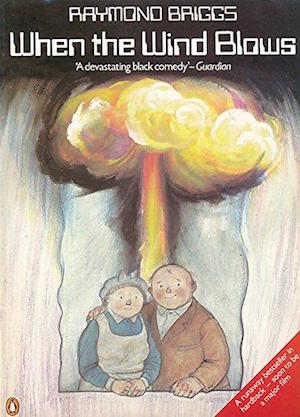
When the Wind Blows features a lovable elderly couple, James and Hilda Bloggs. The Bloggs had a jolly time in World War Two, but their childhood experiences have in no way prepared them for the World War to come. They are among the lucky few who survive the initial blasts but, alas, the United Kingdom is a very small place. And the Bloggs don’t understand that there’s no place to run from fallout.
When the Wind Blows is more proof that the British just don’t know how to enjoy nuclear war. Instead of pleasing explosions seen at a comforting distance, instead we are offered an up-close view of the horrifying deaths of two bewildered pensioners.
Parents of grade-schoolers will be pleased to know When the Wind Blows is available as a graphic novel, an animated film, and best of all, a play suitable for the kiddos to perform.
Threads (1984)

Threads, a film written by Barry Hines and directed by Mick Jackson, shares with Ing’s novel a divided focus. On the one hand, there’s a history of World War Three; on the other hand, there’s a chronicle of how UK citizens (Ruth Beckett, Jimmy Kemp, and the other inhabitants of Sheffield) deal with 210 megatons of destruction.
Hines is a pessimist. Once the bombs begin to fall, it becomes very easy to keep track of the remaining protagonists. Only one character survives the war. Post-war society is reduced to medieval tech levels and must also cope with radiation sickness and a depleted ozone layer.
“The Manhattan Phone Book (Abridged)” by John Varley (1984)
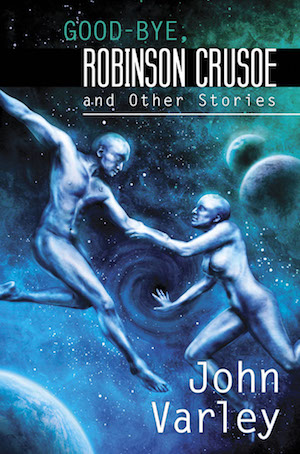
At least the previous book had one long-term survivor. Not so “The Manhattan Phone Book (Abridged)”. Varley recounts the fates of various inhabitants of Manhattan following a nuclear attack. He’s picked the right Manhattan-wide scale to demonstrate how distance from a nuclear strike will affect survivors. Short-term survivors, that is. There are no long-term survivors in this tale.
Varley’s story manages to compress much bitter despair into few words. It can be read here.
Warday by Whitley Strieber and James Kunetka (1984)
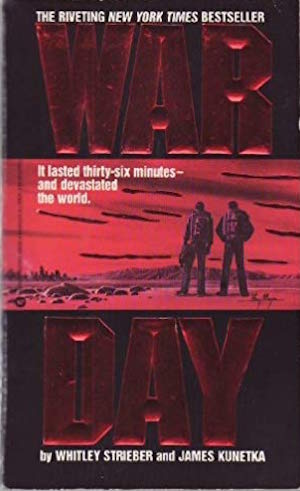
Warday is a far sunnier tale. It tells of a road trip across what remains of America following a limited nuclear war with the Soviet Union. What remains is a broken, balkanized land subject to radioactive dust storms and exploitation by the nations that sat out the exchange. That the United States came out it better than the late Soviet Union is little comfort.
It says a lot that this is one of the happier books on this list: Sure, tens of millions of Americans died, but hundreds of millions didn’t. I imagine the billions of people elsewhere on the planet are also happy to wake up each morning. Not that the characters (fictionalized versions of the authors) really appreciate how lucky they were to be written by themselves rather than John Varley.
Miracle Mile by Steve De Jarnatt (1988)
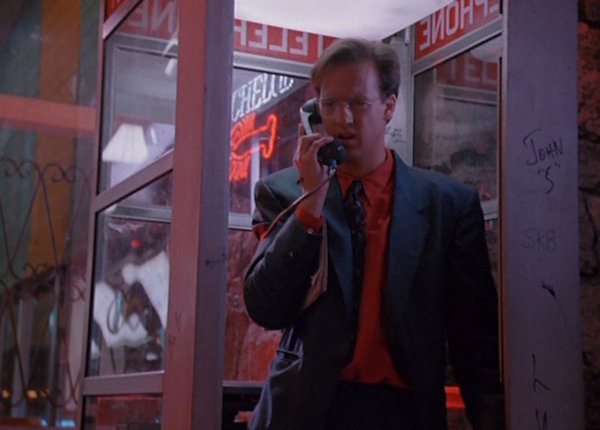
The film Miracle Mile begins with a romantic misstep: lovestruck Harry sleeps through his date with Julie. His attempt to phone her puts him on the receiving end of a panicked wrong number from an American serviceman trying to warn his father that nuclear attack is imminent. With seventy minutes before the first salvo will arrive, Harry has to find Julie, convince her the world is about to end, and secure transport out of doomed Los Angeles.
If there’s anything more romantic than “the threat of war unites two lovers in a romance that will last for the rest of their lives,” I don’t know what it is. This is an ideal first date film.
(Eighties hair warning.)
A Gift Upon the Shore by M. K. Wren (1990)

A Gift Upon the Shore looks at life after pandemic and nuclear war has scoured most advanced civilization from the face of the Earth. Mary and Rachel struggle to gather what books they can find and preserve them for later eras to use. A nearby religious community takes the view that the only book necessary is the Bible; accordingly, the ladies’ library must go.
As World After the Bomb stories go, A Gift Upon the Shore falls somewhere in the middle of the optimism scale. Humanity doesn’t hitch up its collective trousers, dust itself off, and continue with the war as in Systemic Shock, but neither does it face extinction as in On the Beach. No act of god is needed to survive the war, only dumb luck.
* * *
All of these entries are grim reading (or viewing)…some more than others. I am struck by how old most of these works are. We live in a world where nuclear war is always a thinkable option. Surely this has inspired some contemporary authors to write noteworthy books about nuclear war—feel free to provide suggestions in the comments. Until then, keep this homily in mind:
In these times of escalating international tension, always keep your loved ones close. After all, you wouldn’t want strangers to eat their charred remains.
In the words of Wikipedia editor TexasAndroid, prolific book reviewer and perennial Darwin Award nominee James Davis Nicoll is of “questionable notability.” His work has appeared in Publishers Weekly and Romantic Times as well as on his own websites, James Nicoll Reviews and Young People Read Old SFF (where he is assisted by editor Karen Lofstrom and web person Adrienne L. Travis). He is surprisingly flammable.










